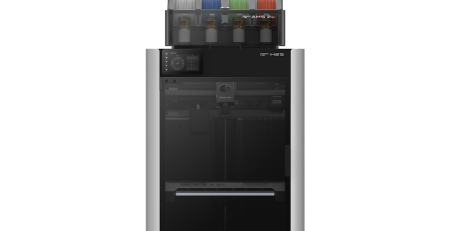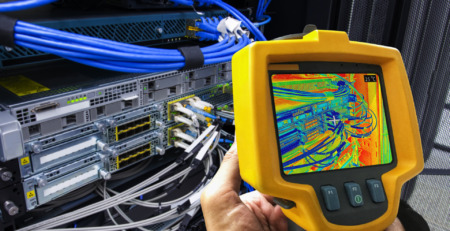Are you having trouble keeping up with the latest technology? Do you feel like your business is falling behind the competition? If so, it might be time to update your IT infrastructure. There are many signs that may indicate it’s time to make a change, but some signs may not be as clear as others.
If you’re not sure whether it’s time for an update, here are 10 signs to watch for:
- Your technology is out of date.
If your business is still using outdated technology, it’s time for an upgrade. Outdated technology can make it difficult to stay competitive and can even lead to security risks. Outdated technology can also make it difficult to attract and retain top talent.
There are several warning signs that can be used to determine whether your technology may be outdated, such as:
- Your employees are using personal devices for work.
- You’re still using on-premise software.
- You’re relying on manual processes.
- You’re using an unsupported operating system.
Although it can potentially be expensive, it can also be one of the quickest problems to identify and one of the best ways to improve your business.
- You’re experiencing more downtime than usual.
If you notice that your systems are down more often than they used to be, it’s a sign that your IT infrastructure is in need of an upgrade. Downtime can be costly for businesses, so it’s important to minimize it as much as possible.
There are several factors that can contribute to increased downtime, such as:
- Outdated hardware or software.
- Poorly configured systems.
- Lack of redundancy.
- Lack of maintenance.
If you’re experiencing more downtime than usual, it’s imperative to investigate the cause and make the necessary changes to reduce or eliminate it.
- You’re having difficulty scaling.
If your business is growing, but your IT infrastructure is struggling to keep up, it’s a sign that you need to upgrade. Scaling problems can lead to decreased productivity and increased downtime.
There are several factors that can make it difficult to scale your IT infrastructure, such as:
- Lack of virtualization.
- Lack of cloud resources.
- Limited storage capacity.
- Poorly configured systems.
If you’re having difficulty scaling, it’s important to address the underlying problems so that you can continue to grow without experiencing any negative impacts.
- Employee productivity is suffering.
If your employees are struggling to be productive, it could be a sign that your IT infrastructure is in need of an update. Poorly configured systems, outdated software, and lack of resources can all lead to decreased productivity.
There are several signs that employee productivity is suffering, such as:
- Increases in help desk tickets.
- Decreases in sales or revenue.
- High turnover rates.
If you’re noticing any of these signs, it’s important to take action to improve your IT infrastructure so that your employees can be more productive. Some of the most immediate actions you can take include increasing storage capacity and upgrading to the latest version of software.
- You’re having trouble attracting or retaining customers.
If you’re struggling to attract or retain customers, it might be time to update your IT infrastructure. In today’s digital world, customers expect businesses to have a modern website and robust online presence. If your website is outdated or difficult to use, it can be a turnoff for potential customers.
There are several signs that you’re having trouble attracting or retaining customers, such as:
- A high bounce rate on your website.
- Low conversion rates.
- Poor customer reviews.
If you’re having trouble attracting or retaining customers, it’s important to take a closer look at your IT infrastructure and make the necessary changes. Some of the most common changes include updating your website design, improving your online presence, and investing in customer relationship management (CRM) software.
- You’re using multiple providers for different services.
If you’re using multiple providers for different services, it’s a sign that your IT infrastructure is in need of an upgrade. Using multiple providers can be expensive and can lead to inconsistency in service levels. It can also be difficult to manage multiple providers, leading to frustration and wasted time.
There are several signs that you’re using multiple providers for different services, such as:
- You’re paying for duplicate services.
- You’re not getting the same level of service from all providers.
- You’re having difficulty managing multiple accounts.
If you’re using multiple providers for different services, it’s important to consolidate your providers to reduce costs and improve service levels. One way to do this is to invest in a cloud-based IT infrastructure that allows you to access all of your services from one provider.
- You don’t have a disaster recovery plan.
If you don’t have a disaster recovery plan, it’s a sign that your IT infrastructure is in need of an upgrade. A disaster recovery plan is essential for any business, as it provides a roadmap for how to recover from a major incident. Without a disaster recovery plan, your business could be at risk of permanent data loss or downtime.
There are several signs that you don’t have a disaster recovery plan, such as:
- You don’t have a backup of your data.
- You don’t have a way to restore lost data.
- You don’t have a plan for how to handle downtime.
If you don’t have a disaster recovery plan, it’s important to create one as soon as possible. A disaster recovery plan will help you protect your business in the event of a major incident.
- You’re not compliant with industry regulations.
If you’re not compliant with industry regulations, it’s a sign that your IT infrastructure is in need of an upgrade. Industry regulations are constantly changing, and it’s important to keep up with the latest changes to ensure that your business is compliant. Failure to comply with industry regulations can result in hefty fines or other penalties.
There are several signs that you’re not compliant with industry regulations, such as
- You’re not sure if your IT infrastructure is compliant with industry regulations.
- Regulators have warned you that you are not in compliance with industry regulations.
If you’re not compliant with industry regulations, it’s important to take steps to ensure compliance. This may include updating your IT infrastructure, implementing new policies and procedures, or training employees on compliance requirements.
- You’re not using the latest technology in your industry.
If you’re not using the latest technology, it’s a sign that your IT infrastructure is in need of an upgrade. Technology is constantly changing, and it’s important to keep up with the latest changes to ensure that your business is using the best possible technology. Failure to do so can result in a competitive disadvantage.
There are several signs that you’re not using the latest technology, such as:
- Your competitors are undercutting your prices
- Your competitors are using new technology that you’re not using
- Your customers are complaining about your outdated technology
If you’re not using the latest technology, it’s important to invest in new technology as soon as possible. This may include investing in new hardware, software, or applications. It’s also important to train employees on how to use new technology.
- You’re not prepared for growth.
If you’re not prepared for growth, it’s a sign that your IT infrastructure is in need of an upgrade. Growth can be sudden and unpredictable, and it’s important to be prepared for it. Failure to do so can result in downtime or other problems.
There are several signs that you’re not prepared for growth, such as:
- You don’t have enough capacity to handle increased traffic.
- You’re not able to scale your IT infrastructure quickly enough to meet demand.
- Your IT infrastructure is not designed for growth.
If you’re not prepared for growth, it’s important to take steps to ensure that your IT infrastructure can handle it. This may include investing in new hardware or upgrading your software. It’s also important to have a plan for how you’ll handle increased traffic and demand.
Conclusion
There are many signs that it’s time to upgrade your IT infrastructure. If you’re experiencing any of the problems listed above, it’s wise to take action to upgrade your IT infrastructure. Doing so will help you avoid downtime, data loss, and other problems.
If you’d like to learn more about the ways your business can benefit from an IT infrastructure upgrade, then contact us to schedule a free consultation!
At Express Computer Service, we cater to all of central New York’s IT infrastructure needs.












Leave a Reply